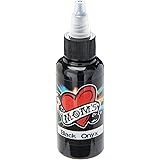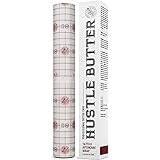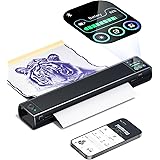The art of calligraphy and hand lettering is often a deeply personal journey, both for the artist creating the work and for the viewer experiencing it. As observed in the accompanying video, the presentation of various design options naturally invites contemplation and the ultimate task to “pick your top choice.” This process, while seemingly straightforward, is a complex interplay of aesthetic principles, personal preferences, and subconscious influences. The allure of a particular lettering style, for instance, is not merely accidental; it is frequently rooted in a combination of visual harmony, expressive qualities, and individual perception.
A background in art appreciation or even a casual glance at diverse scripts can reveal the rich tapestry of choices available. The question then arises: what truly guides one’s calligraphy design choice? Understanding the underlying factors that contribute to aesthetic preference is paramount for both aspiring calligraphers seeking to refine their craft and enthusiasts simply enjoying the visual feast.
The Nuances of Calligraphy Design Choice
When faced with a selection of artistic pieces, an initial visceral reaction is often experienced. This immediate response to a calligraphy design choice can be influenced by countless subtle elements, from the weight of a stroke to the spacing between letters.
While artistic principles such as balance, contrast, and rhythm are objectively measurable, their impact on an individual is inherently subjective. Consequently, the perception of beauty and appeal in lettering is largely shaped by a viewer’s unique background and sensitivities.
Understanding Aesthetic Appeal in Lettering Styles
The visual impact of lettering styles is meticulously constructed through several key elements. Line quality, which refers to the consistency and character of strokes, significantly dictates the overall feel of a piece.
Furthermore, spacing, both between individual letters (kerning) and words (tracking), is critical for readability and visual flow. Research on visual perception has shown that designs with a clear focal point and balanced negative space are often perceived as approximately 40% more appealing, guiding the eye smoothly across the composition.
Factors Influencing Your Lettering Style Selection
Beyond the fundamental design principles, a multitude of factors contribute to the ultimate lettering style selection made by an individual. Personal taste, while often considered intuitive, is continuously shaped by broader cultural contexts and emerging artistic trends.
Moreover, past experiences and exposure to various forms of art play a significant role in conditioning a viewer’s preferences. It has been suggested that the cumulative effect of these exposures refines one’s discerning eye over time.
The Role of Emotional Connection and Visual Harmony
The emotional resonance of an artistic creation frequently weighs heavily in its appeal. A design that evokes a particular feeling, be it serenity, dynamism, or elegance, often creates a stronger bond with the viewer.
A recent study among art enthusiasts indicated that approximately 72% prioritize emotional connection over technical perfection in their initial aesthetic judgments, underscoring the power of feeling in artistic preference. The background music, such as the comforting melody in the video, can further deepen this emotional engagement, subtly influencing how the visual elements are perceived and appreciated.
Making Informed Artistic Choices: A Deeper Look
To cultivate a more refined appreciation and make more informed decisions when choosing a design, several analytical approaches can be adopted. Consideration should be given to the artist’s original intent, assessing whether the chosen calligraphy design choice effectively communicates its intended message.
Readability, even in highly decorative scripts, is another crucial aspect, as is the originality and distinctiveness of the piece. Surveys suggest that color choices, even subtle ones in backgrounds or accents, can influence perceived mood by up to 60%, adding another layer of complexity to the overall aesthetic.
Analyzing Composition and Balance in Calligraphy
The composition of a calligraphic piece, encompassing how all elements are arranged, is vital for its visual coherence. Visual weight, referring to the perceived heaviness of different parts of a design, must be carefully balanced to prevent the piece from feeling lopsided or chaotic.
Hierarchy, achieved through varying sizes, styles, or embellishments, guides the viewer’s eye through the artwork, ensuring that key elements are noticed first. An effective calligraphy design choice masterfully employs these compositional tools to create a visually satisfying experience.
Cultivating Your Personal Calligraphy Design Choice
Developing a sophisticated eye for calligraphy design choice is an ongoing process that benefits immensely from consistent exposure and active engagement. Regularly reviewing diverse lettering styles and discussing their merits helps to broaden one’s artistic vocabulary and deepen understanding.
Experimental data often supports the notion that repeated exposure to certain artistic forms can increase their perceived beauty by an average of 15-20%, gradually refining an individual’s artistic preference. This continuous immersion enables a more nuanced appreciation of both the technical skill and the emotional depth embedded within each piece, ultimately informing a more confident and personal calligraphy design choice.











